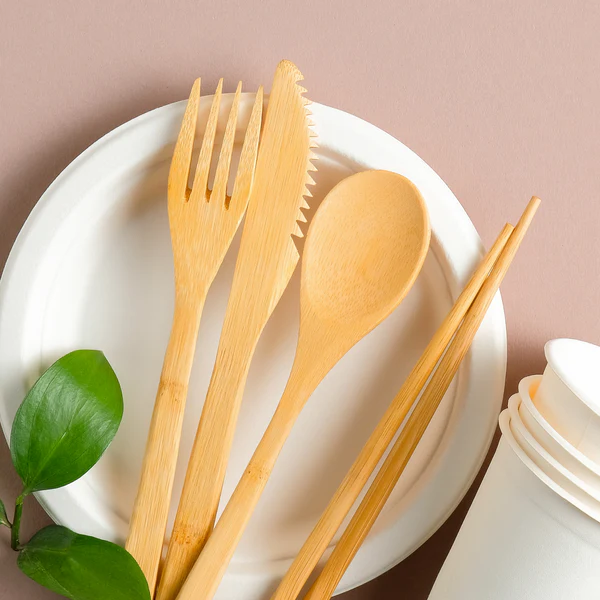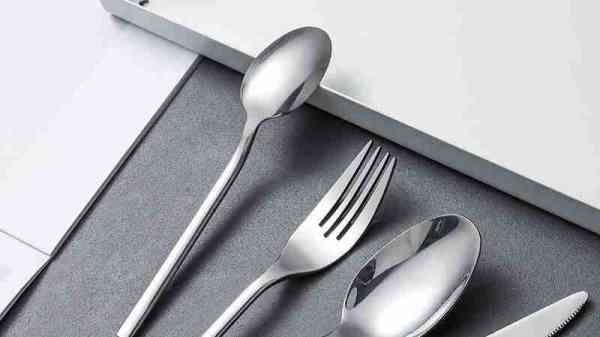Bamboo vs Stainless Steel Cutlery: A Comprehensive Comparison for Eco-Friendly Choices
Bamboo Cutlery vs Stainless Steel Cutlery: A Comparative Guide
As European consumers increasingly prioritize sustainability, choosing between bamboo cutlery and stainless steel cutlery has become significant. This guide compares both types, focusing on their environmental impact, user experience, and overall value. The central keyword here is “eco-friendly cutlery.”
Material and Environmental Impact of Eco-Friendly Cutlery
Bamboo Cutlery

- Material:Bamboo cutlery comes from bamboo, a rapidly renewable resource. Bamboo grows quickly and requires fewer resources compared to other materials, making it a prime example of eco-friendly cutlery.
- Environmental Benefits: Bamboo cutlery provides notable environmental benefits. Bamboo absorbs CO2 and releases oxygen, contributing positively to the environment. Additionally, bamboo cutlery is biodegradable, which helps reduce waste and minimizes the environmental footprint linked with disposable cutlery.
- Production Process: The production of bamboo cutlery involves fewer chemicals compared to other materials. Nonetheless, it is crucial to source bamboo responsibly and ensure the production process remains environmentally friendly.
Stainless Steel Cutlery

- Material: Stainless steel cutlery is made from an alloy steel, typically consisting of 18% chromium and 10% nickel. It is known for its durability and corrosion resistance.
- Environmental Impact: Although stainless steel is recyclable, its production process is resource-intensive and requires substantial energy. This high-temperature process results in a larger carbon footprint, contrasting with the benefits of bamboo cutlery.
- Recycling: On the positive side, stainless steel cutlery can be efficiently recycled, which helps mitigate some of its environmental impacts. Proper recycling practices can reduce the ecological footprint associated with stainless steel.
User Experience and Practicality
Bamboo Cutlery
- Comfort: Bamboo cutlery is lightweight and provides a natural feel. While it may lack the weight or stability of stainless steel, it offers a unique experience for those who value eco-friendly cutlery.
- Durability: Although bamboo cutlery is sturdy, moisture can affect its longevity. Therefore, users must handle it carefully and dry it promptly after washing to maintain its condition.
- Cleaning: To extend the lifespan of bamboo cutlery, hand washing and thorough drying are essential. This maintenance helps prevent mold and degradation.
Stainless Steel Cutlery
- Comfort: Stainless steel cutlery is heavier and offers a solid, stable feel. Many people prefer it for its durability and comfort, making it a practical choice for everyday use.
- Durability: Known for its long-lasting properties, stainless steel cutlery can endure high temperatures and heavy use without damage. Thus, it proves reliable for both home and commercial settings.
- Cleaning: Stainless steel cutlery is easy to clean and can be placed in a dishwasher. Its resistance to stains and odors makes it a low-maintenance option.
Aesthetic, Cost, and Value
Bamboo Cutlery
- Aesthetic: Bamboo cutlery provides a natural and warm appearance, ideal for those who value eco-friendly cutlery and a rustic look. Its unique grain and color add a distinctive touch to the dining experience.
- Design: Typically, bamboo cutlery features simple and functional designs, but some pieces include handcrafted elements or artistic designs that enhance their visual appeal.
- Cost and Value: Generally, bamboo cutlery is more affordable and provides a cost-effective option for those prioritizing sustainability. However, its shorter lifespan might impact its overall value compared to stainless steel.
Stainless Steel Cutlery
- Aesthetic: Stainless steel cutlery boasts a sleek, modern appearance with a polished finish. It complements various dining settings, from classic to contemporary.
- Design: Stainless steel cutlery is available in a wide range of designs, catering to diverse aesthetic preferences and practical needs.
- Cost and Value: While the initial cost is higher, the durability and longevity of stainless steel cutlery offer good value over time. It is suitable for those seeking a long-term investment in practical, eco-friendly cutlery.
Conclusion
Choosing between bamboo cutlery and stainless steel cutlery involves weighing both environmental impact and practical needs. Bamboo cutlery excels with its eco-friendly characteristics and natural appeal, aligning well with a commitment to sustainable living.
Conversely, stainless steel cutlery provides unmatched durability and ease of maintenance, making it ideal for those who prioritize practicality.
Value of Eco-Friendly Cutlery
Making mindful choices in cutlery can contribute significantly to broader sustainability goals. Bamboo cutlery offers an immediate, biodegradable option with minimal environmental impact, whereas stainless steel cutlery, despite its higher initial resource use, provides long-term sustainability through durability and recyclability.
